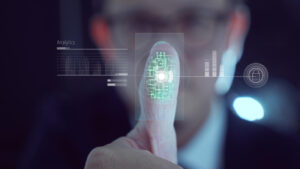In the realm of cybersecurity, Multi-Factor Authentication (MFA) stands as a cornerstone in fortifying digital defenses noted by Bahaa Abdul Hadi. MFA enhances security by requiring users to provide two or more authentication factors before granting access, thwarting unauthorized access even if one factor is compromised. However, the efficacy of MFA is not impervious to vulnerabilities. This blog delves into analyzing the vulnerabilities inherent in MFA techniques, shedding light on potential threats and strategies for fortification.
Understanding Multi-Factor Authentication (MFA)
MFA, at its core, augments traditional password-based authentication by incorporating additional layers of verification. These layers typically include something the user knows (e.g., password), something the user has (e.g., token or smartphone), and something the user is (e.g., biometric data). By requiring multiple factors, MFA significantly bolsters security and mitigates the risks associated with single-factor authentication.
Common Vulnerabilities in MFA Techniques
Despite its robustness, MFA is not immune to exploitation observed by Bahaa Abdul Hadi. Phishing attacks, for instance, pose a significant threat to MFA systems. Cybercriminals deceive users into divulging their credentials or bypassing MFA altogether.
Plus, man-in-the-middle attacks leverage weaknesses in MFA implementations to intercept and manipulate communication between users and authentication systems. Additionally, SIM swapping, where attackers fraudulently gain control of a user’s phone number, undermines SMS-based MFA methods. Furthermore, weak or default credentials present another avenue for exploitation, rendering MFA ineffective in thwarting unauthorized access.
Strategies for Mitigating MFA Vulnerabilities
To bolster MFA defenses, organizations must adopt proactive measures. Employee training and awareness programs are vital in educating users about the dangers of phishing and the importance of safeguarding credentials. Plus, the implementation of stronger authentication factors, such as hardware tokens or biometrics, enhances security by raising the bar for attackers.
Continuous monitoring and updates of MFA systems are essential to identify and patch vulnerabilities promptly. Furthermore, integrating MFA with complementary security measures, like biometrics or behavioral analytics, fortifies defenses against sophisticated attacks.
Conclusion
In conclusion, while Multi-Factor Authentication (MFA) serves as a robust defense mechanism in cybersecurity, it is not impervious to vulnerabilities. This blog has shed light on the common vulnerabilities inherent in MFA techniques, including phishing attacks, man-in-the-middle attacks, SIM swapping, and weak credentials. However, proactive strategies can mitigate these risks and fortify MFA defenses.
By educating users about the dangers of phishing and the importance of safeguarding credentials, organizations can significantly reduce the likelihood of successful attacks. Plus, the adoption of stronger authentication factors, continuous monitoring, and updates of MFA systems, and integration with complementary security measures like biometrics or behavioral analytics, are essential steps in enhancing MFA security.
Looking ahead, the future of MFA lies in its adaptability and integration with emerging technologies. As cyber threats continue to evolve, MFA must evolve alongside them to maintain its effectiveness. The article has been written by Bahaa Abdul Hadi and has been published by the editorial board of www.identityherald.com




